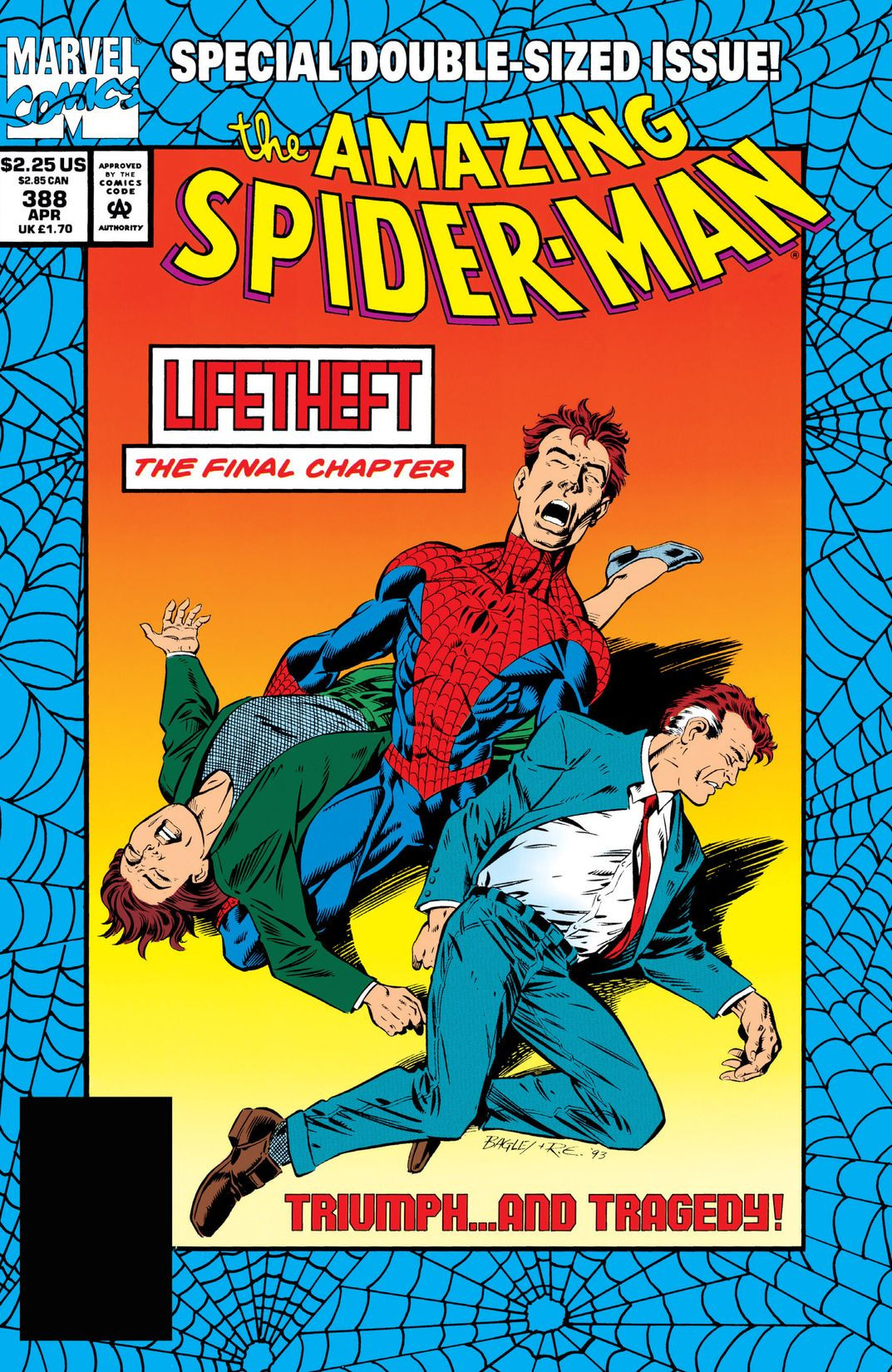Legend of the Arach-Knight
When your friendly neighborhood hero starts to resemble the distinguished competition
by Phil Perich for the Capes and Lunatics Blog
The 1990s. It was a big, bold new era for comic books. The 1990s saw the rise of the anti-hero in comics, from former villains like Venom becoming “lethal protectors” to the X-Men phenomenon giving rise to big gun-toting, take no prisoners “soldiers” like Cable. Even existing heroes changed costumes, went darker, or were replaced for a time.
Just about every comics fan knows about the infamous clone saga era in Spider-Man history that started in 1994. But even a year or so before the arrival of Peter Parker’s clone Ben Reilly, the powers that be at Marvel Comics attempted to give Spider-Man a “dark” makeover and portray the character closer to DC Comics Batman whose books were beating Marvel in sales numbers thanks to the Knightfall saga. Don’t believe me? Look at the evidence:
Family Affair
We all know the story of Bruce Wayne’s parents, how their murder was the catalyst for Bruce devoting his life to the mission of Batman. Peter Parker barely remembered his parents. They were spies who were believed to have died overseas when Peter was very young. Decades later, Richard and Mary Parker are supposedly discovered alive in a Russian prison camp and are eventually reunited with the son they barely knew. It’s later revealed that “Richard” and “Mary” are advanced androids sent by the Chameleon to discover Spider-Man’s true identity.
This was one of two major heartaches that drove Peter Parker towards the darkness (Aunt May’s health scare and supposed “death” the second). The loss of parents sending a hero down a dark path.
The Spider
Every dark heroes needs a darker persona and a bad attitude. After the shock of the truth about his parents, his aunt May barely clinging to life and a gap growing between Peter and his wife Mary Jane, Spider-Man attempts to leave his life behind as Peter Parker and just exist as “The Spider” and deal with the ever escalating threat of more dangerous enemies by fighting fire with fire. But with the moral man Peter Parker at the core of Spider-Man, The Spider’s attempt to deal rougher justice was met with mixed results.
Buddy Cop
While Batman had Jim Gordon as his inside line to the Gotham City Police Force, Spider-Man had had a few police officers sympathetic to his cause. George Stacy and Jean Dewolff were allies to Spider-Man at different times until they were killed in the line of duty. In the dark, gritty period of the 1990s, Spider-Man’s Police ally was Detective Connor Trevane. Trevane didn’t know what to makes of Spider-Man for the most part, but he felt a debt to the hero after Spider-Man saved his son’s life. Like many characters from this era, Trevane disappeared from the Spider-Man books after the clone saga era.
With Enemies Like These…
One of the biggest signs of a more “Dark Knight” Spider-Man to me was the creation of the villainous team of Carnage and Shriek. Having been created a few years earlier as the spawn of Venom, Carnage was a combination of an alien symbiote and serial killer named Cletus Kasady. Carnage reveled in murder and chaos, always looking for the sick joke that life didn’t matter, and always with a smile on his face (sound familiar?). The comparison became even more apparent to me in the form of a “sidekick” for Carnage, the equally unhinged and disturbed Shriek. Between meeting in a mental hospital and Shriek’s painted appearance, these two were definitely meant to be Spider-Man’s Joker and Harley Quinn.
House Call
Every Batman fan knows that in the comics, movies, TV shows and animated series that after Batman defeats his more mentally unstable foes, he takes them to Arkham Asylum for treatment and incarceration. In the 1990s, Spider-Man had his own version of this with the Ravencroft Institute and Doctor Ashley Kafka. Once again, Ravencroft and it’s director did not make it past the 1990s for the most part except for a few appearances like the one in the Amazing Spider-Man 2 movie.
No Substitute
And the final Spider-Man/Batman comparison I can can come up with is the fact that both heroes went through a period in the 1990s where they were unable to carry on their heroic duties and were forced to pass their mantles to others, in Batman’s case the violent, brainwashed Jean Paul Valley aka Azrael and in the case of Spider-Man it was his clone Ben Reilly that took over. Both newer heroes had different approaches to fighting evil then their predecessors and used newer weapons and equipment. In the case of Ben Reilly he improved on the original Spider-Man “arsenal” with impact webbing and knockout stingers. This may be the weakest comparison between Spider-Man and Batman considering most heroes have at least one story where they are replaced for a time.
So what do YOU think? Am I spot on or completely off base? Did I miss any evidence? Who did it better, Spider-Man or Batman? Let me know!
nightwingpdp@gmail.com or capesandlunatics@gmail.com
@NIghtwingpdp, @CapesLunatics, @CLSidekicks on Twitter
Capes and Lunatics voicemail: 614-382-2737
You can hear me and my cohosts discussing all things Marvel, DC Comics, TV, movies, and all pop culture and entertainment on the Capes and Lunatics and Capes and Lunatics: Sidekicks Podcasts and Capes and Lunatics YouTube channel several times a week.





